Kids’ Energy section
Energy Vampire Challenge
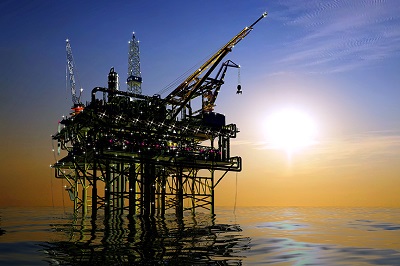
Energy costs are getting more expensive and a link has been made between burning fossil fuels and climate change. The term 'Climate Change' is commonly used interchangeably with "global warming" and "the greenhouse effect". It refers to the build up of man-made (greenhouse) gases in the atmosphere that trap the suns' heat, causing changes in weather patterns on a global scale. The effects include changes in rainfall patterns, sea level rise, potential droughts, habitat loss, and heat stress. The vital difference between the current period of global warming compared to previous cycles of climate change is how quickly the rate of change is happening. The planet has warmed by about 1°C over the past 100 years, and most scientists now agree that this is mainly as a result of the increasing amount of greenhouse gases (particularly CO2) released into the earth's atmosphere from human activity.
As a result of the billions of tonnes of CO2 (and other greenhouse gases) released globally each year the blanket of gases in the atmosphere is trapping more heat inside, resulting in global warming and unpredictable weather patterns. As far back as 1967 the first reliable computer simulation calculated that global average temperature could increase by more than 4°C when the atmospheric CO2 levels reach double that of pre-industrial times. However, it is only relatively recently that the full extent of the dangers and possible effects of climate change have emerged.
We are extremely dependent on the importation of fossil fuels. These fuels ensure that we have heating and lighting in our homes and schools and that we can use our cookers, washing machines and other modern conveniences around the home. 99% of all the country’s energy needs have to be imported and we have one of the highest energy dependency rates of any country in Europe.

Airtricity's Operation Energy includes a Kid Zone filled with games, activities and downloads where you can learn more about energy and become an Operation Energy hero!
Did you know that:
- The home is one of the largest users of energy in Northern Ireland. It accounts for almost a quarter of the energy used in the country. This is even more than the transport, agriculture or services sectors.
- Although there has been a reduction of almost 15% since 1990, greenhouse gas emissions have increased in the last few years and are up almost 4% since 2009.
- We use fossil fuels to create most of our energy.
For more interesting facts and figures have a read of the following sections:
1. Renewable Energy
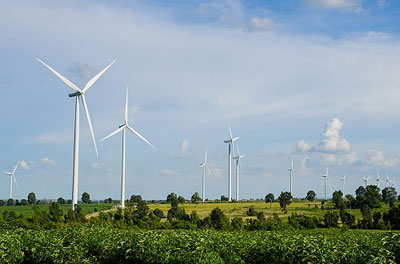
We know that we have one of the highest energy dependency rates of any country in Europe - what does this mean? This means that in order to create electricity we need to import gas, coal and oil from other countries which leaves us in a vulnerable position.
What’s does the word renewable mean? Infinite vs. Finite!
The resources we import to power electricity stations are non renewable - this means they are finite and going to run out! They were formed millions of years ago from a time even before the dinosaurs where around. They are termed fossil fuels because they are old fuels! Renewable resources are those that can be continually replenished and won’t run out! They are in infinite supply! Northern Ireland is regarded as having one of the greatest wind energy resources in Europe. It is important that the potential of this resource is maximised to contribute to an increase in the proportion of our energy that is derived from renewable sources.
Why should we be concerned?
The problem with using fossil fuels as an energy source is:
- Price - think of all the import and transporting costs, not to mention the fact that increase in demand increases the price!
- The pollution - when fuels are burnt to generate energy such as electricity they emit greenhouse gases which contributes to global warming!
Think about Northern Ireland:
Do you know any sources of renewable energy (won’t run out) used to produce energy here?
Although we do not live in what is condisered a sunny climate there is considerable untapped solar potential. In fact, every year we receive the equivalent of 600 times the amount of energy from the sun, than it actually uses itself. Families can save up to 50% of the energy bills with solar heating. (www.totalsolar.co.uk, 2008).
2. Energy Vampire Hunt & Family Time!
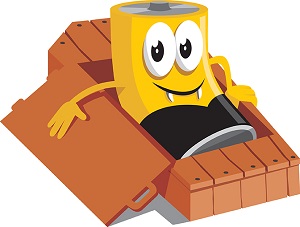
Energy vampires love energy - they drain energy even when you think they’re not and use more energy than they will ever need!
What are they? They live in the electrical appliances that make human life easier (Your phone & i-pod charger, TV, cordless phone, washing machine even your kettle) and they act as vampires draining energy.
How do they do this? When appliances are on standby mode (when you’re not using them but they are still plugged in) they still consume electricity. They can consume up to 20%! The only way to stop them is to unplug or turn appliances off at the direct source of power.
Slaying the Vampire Tips
Unplug it: For items that have a switch make sure it's turned off. (E.g. turn your TV off at the power source rather than using the remote control. Unplug all items without switches.
Re-evaluate: Do you really need the latest and greatest model? Be realistic and stick to your needs. Unplug and de-clutter and place items you don’t need in storage (e.g. sandwich toasters and bread makers)
Labels check: Choose models that use the least amount of standby power. Check out the energy star rating of appliances.
Computer Tip: for items like computers that use multiple plugs use a power board as this means that you just have one switch to turn off after use. Be aware some power boards have standby mode too!
The Energy Vampire Hunt

Track down and slay the sneaky Energy Vampires in your home some evening while following the steps below:
- Ask your Mum or Dad to find you a torch and wait until it gets dark outside.
- Pretend you are going to bed and turn things off the way you usually would.
- Hold onto your torch and turn off all of the lights
- Hunt for the eerie glow of red lights that signal appliances are on standby.
- Look for digital displays that are still lit e.g. alarm clocks.
- Touch appliances to see if they are warm - this is another sign they are draining power.
Make a list of any energy vampires that you found. Did you find any vampires that need to stay plugged in?
Family Time
Pick one evening to turn off the TV, computer and play station. Choose a family activity you can all enjoy (charades, art project, puzzles, monopoly, twister, a trip to the park, outdoor picnic).
In your homework copy book write about the activity you choose and whether it was enjoyable or not. Also, write about other tips you can think of to promote more family time and less energy use.
3. No Cost Solutions - Warm up Wisely!
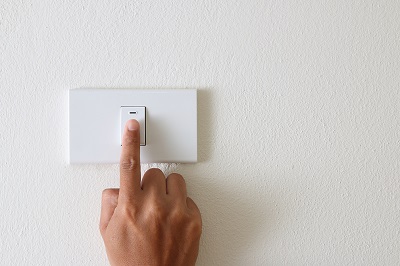
There are several simple steps you can take to reduce your energy consumption at home without having to spend any money. For example turning off lights in unused rooms and only drying clothes naturally or outdoors when possible can all help to save money and energy. We have listed lots more simple steps that you can take at home below. Try them out and see how much money you can save!!:
Heating
- Close doors to ensure that heat doesn't escape and make sure to turn down the heat in unused rooms.
- Use a timer on your immersion heater.
- Be sure to close you curtains at night to trap heat in your room.
Lights
Appliances
- Turn off electrical appliances at source rather than leaving them on standby
Fridge-Freezer
- The build up of frost increases energy consumption. Consider defrosting your fridge/freezer once a year to avoid this.
- Defrosting frozen food in the fridge may take a little longer but it will keep your fridge cool and prevent unwanted bacteria growth.
- Locate your fridge/freezer in the coolest part of your kitchen/utility so that it doesn't have to work extra hard (i.e. use more energy) to keep things cool
- Allow food to cool before putting it in the fridge/freezer
Ovens/Cooking
- It's best to avoid opening the oven door while cooking. Every time you do you lose 20% of the accumulated heat
- Microwaves save time and energy as they use less than one unit of electricity per hour.
- When reheating food consider using the microwave instead of the oven.
- When toasting bread use the toaster instead of the grill, it is much more energy efficient.
- Only fill the kettle with as much water as you need. This helps to save time and energy.
Low Cost Solutions - Hunting Time!

Families can make further savings by investing small amounts on items like draught excluders, lagging jackets and attic insulation. Complete the 3 activities listed below and discover some new low cost tips:
Hunt 1: Lagging Jacket
1. Does your hot water cylinder have a lagging jacket or insulation?
Fact: A lagging jacket will pay for itself in a matter of months. It will keep the water hotter for longer. An 80mm lagging jacket can reduce heat loss by up to 75%. If replacing the hot water cylinder, a cylinder with factory applied insulation should be considered. Such insulation is more effective at retaining heat than a lagging jacket, is less easily damaged and cannot be pulled out of place.
Hunt 2: Draught Hunt! Take your family on a draught hunt
1. Have you ever felt small breezes creeping through the windows, letter box or fireplace? This is a draught.
To make a ‘draught-o-metre’ attach a sheet of cling wrap, tissue paper or low weight paper (approx 20 cm by 10 cm) to a pencil. Secure with sticky tape. Close the windows and doors and hold up your ‘draught-o-metre’ and see if it blows. Test: under doors/letterbox/windows
2. Did you find any draughts? Where?
3. Can you think of any ways to stop your draughts? A fun way to stop draughts is to make a draught guard! Stuff a sports sock or stocking with lentils, rice or rags-turn and make a fun character.
Hunt 3: Attic insulation!
Do you know the depth of insulation in your attic? NB: Parental supervision is necessary for this challenge. If parents wish to show their children the insulation in the attic they should inspect attics first.
Do you have enough attic insulation?
1. Take the depth-o-metre provide by your child/ren.
2. Slide the depth-o-metre down between the insulation and the joist until the bottom edge rests on the ceiling board.
3. Mark off the depth of your attic insulation on your depth-o-metre.
What was your insulation level? Did this surprise you? What action can you take to maintain or improve your insulation level?
FACT: INSULATE YOUR ATTIC AND SAVE 20% OFF YOUR HOME HEATING BILL.
Some more low cost tips:
- Purchase a lagging jacket for your hot water system
- Using black out lining on curtains can further trap heat
- Insulate your home and attic to prevent draughts
- When buying heaters, make sure that they are the appropriate size for the rooms and have thermostatic controls.
- If the radiator is mounted below a window, a projecting window-board or shelf above the radiator will direct warm air into the room, reducing heat loss through the window.
- Reflective foil, backed by insulation such as polystyrene sheets if space permits can be fixed behind radiators and mounted on external walls. Maintenance, servicing & proper control of your heating system can reduce fuel consumption by 10-20%.
4. Learning about lights and trees
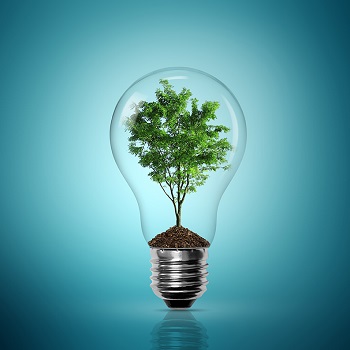
Only 10% of the energy used by an incandescent bulb is used for light - the other 90% escapes as heat. If in doubt you can do a small experminent with the help of your parents. Take a normal light bulb and an energy efficient light bulb. Place each light bulb in a lamp (one at a time) and using a thermometer check the heat emitted by each of the bulbs by placing the thermometer 15cm away from the bulb. Which bulb wastes the most heat??
Using CFL's for security and general garden lighting is a very cost effective choice. An 11 watt CFL running all night, every night costs less than £5 a year (roughly) in electricity costs! Using task lighting can cut your power bill too: task lighting is lighting an area for a specific task instead of lighting the whole room (e.g. above a cooker or at an arm chair).
Trees
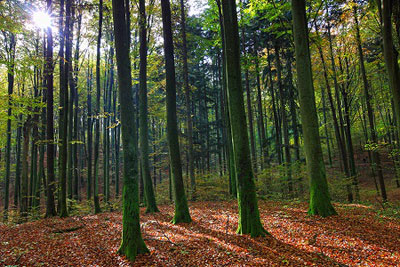
Trees play an important role in protecting the environment by improving air quality, conserving water, storing carbon and providing a home to different types of wildlife. Air quality improves as leaves filter the air we breathe, by removing dust and other particles. Trees can also balance the climate by providing shade from the sun, rain and from the wind. Trees help to reduce the possibility of flooding by intercepting water, storing some of it, and reducing storm runoff.
Trees play an important role in storing or “sequestering” the excess carbon dioxide in the atmosphere. Carbon is an element that is stored in fossil fuels such as coal and oil, as well as in wood and living plant life. When these fuels are burned, carbon dioxide is released into the atmosphere where it acts with other gases to form what is called “greenhouse gas.” The over production of greenhouse gases contributes to climate change. By absorbing the excess carbon in the atmosphere trees can help to combat climate change while providing important habitats for a range of species.
5. Games
For some energy related games take a look at the links below:
SSE Airtricity's Operation Energy - help Doc Energy and Penny Monitor defeat evil Sir Standby
E School Today - a great game for learning about climate change
Kids Saving Energy – Games
SEAI- Save Energy Game
Tiki the Penguin - Quizzes

